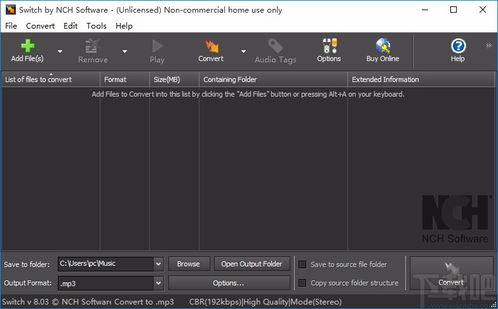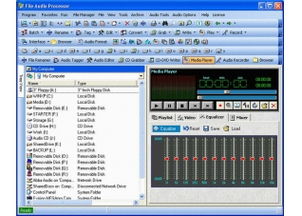
Understanding Audio File Formats: A Detailed Guide for You
Audio files are an integral part of our digital lives, from music collections to podcasts and voice recordings. As someone who is passionate about audio, it’s essential to understand the different file formats available. This guide will delve into the nuances of various audio file formats, helping you make informed decisions about your audio files.
What is an Audio File Format?

An audio file format is a standardized way of encoding and storing audio data on a computer system. It determines how the audio data is compressed, encoded, and stored, which affects the file size, quality, and compatibility with different devices and software.
Common Audio File Formats

There are numerous audio file formats, each with its unique characteristics. Here’s a detailed look at some of the most popular ones:
| Format | Description | Compression | Quality | Compatibility |
|---|---|---|---|---|
| MP3 | One of the most widely used audio formats, known for its high compression ratio. | Lossy | Good | Extremely high |
| WAV | High-quality audio format, often used in professional settings. | Lossless | Excellent | High |
| FLAC | Free Lossless Audio Codec, offers high-quality audio without any loss of data. | Lossless | Excellent | Medium |
| OGG | Open-source audio format, known for its efficient compression and streaming capabilities. | Lossy and Lossless | Good to Excellent | Medium |
| ALAC | Apple Lossless Audio Codec, used in Apple devices and software. | Lossless | Excellent | Medium |
MP3: The King of Audio Formats

MP3 (MPEG Audio Layer III) is the most popular audio format, thanks to its high compression ratio. It reduces the file size by removing some of the audio data that the human ear cannot perceive, resulting in a smaller file size without a significant loss in quality. This makes MP3 an ideal format for streaming and downloading music.
WAV: The Professional’s Choice
WAV (Waveform Audio File Format) is a high-quality audio format used in professional settings. It stores audio data in a lossless format, meaning that no data is lost during the compression process. This results in excellent audio quality but also larger file sizes compared to other formats like MP3.
FLAC: High-Quality, Lossless Audio
FLAC (Free Lossless Audio Codec) is a lossless audio format that offers high-quality audio without any loss of data. It provides better sound quality than MP3 and is gaining popularity among audiophiles. However, FLAC files are larger in size than MP3 files.
OGG: Open-Source and Efficient
OGG (Ogg Vorbis) is an open-source audio format that offers efficient compression and streaming capabilities. It supports both lossy and lossless compression, making it a versatile format for various audio applications. OGG files are smaller than MP3 files but offer similar quality.
ALAC: Apple’s Lossless Audio Format
ALAC (Apple Lossless Audio Codec) is a lossless audio format used in Apple devices and software. It provides high-quality audio without any loss of data, similar to FLAC. ALAC files are compatible with most Apple devices and software, making it a popular choice among Apple users.
Choosing the Right Audio Format
Selecting the right audio format depends on your specific needs. If you’re looking for a format with high compression and compatibility, MP3 is the way to go. For professional-quality audio, WAV






